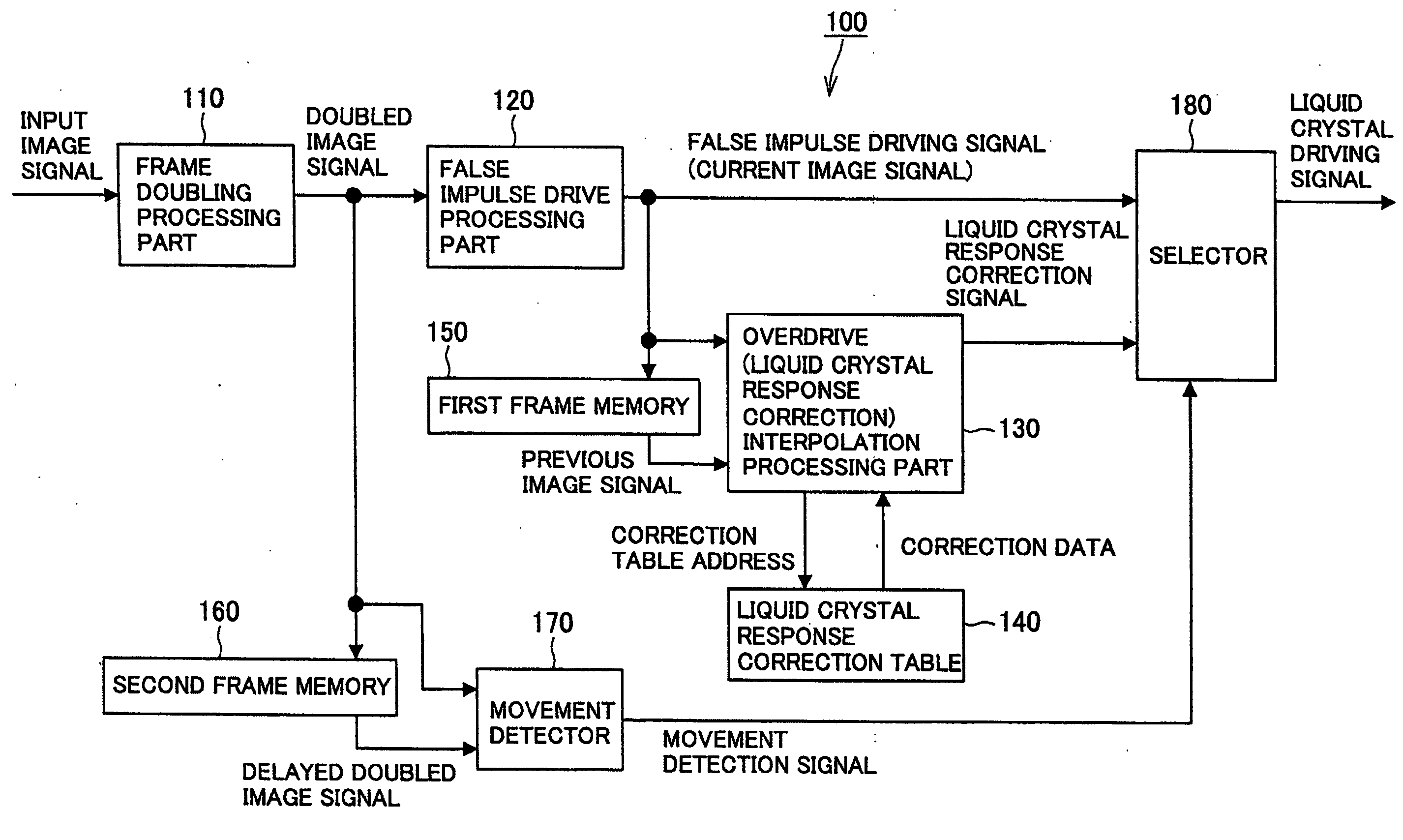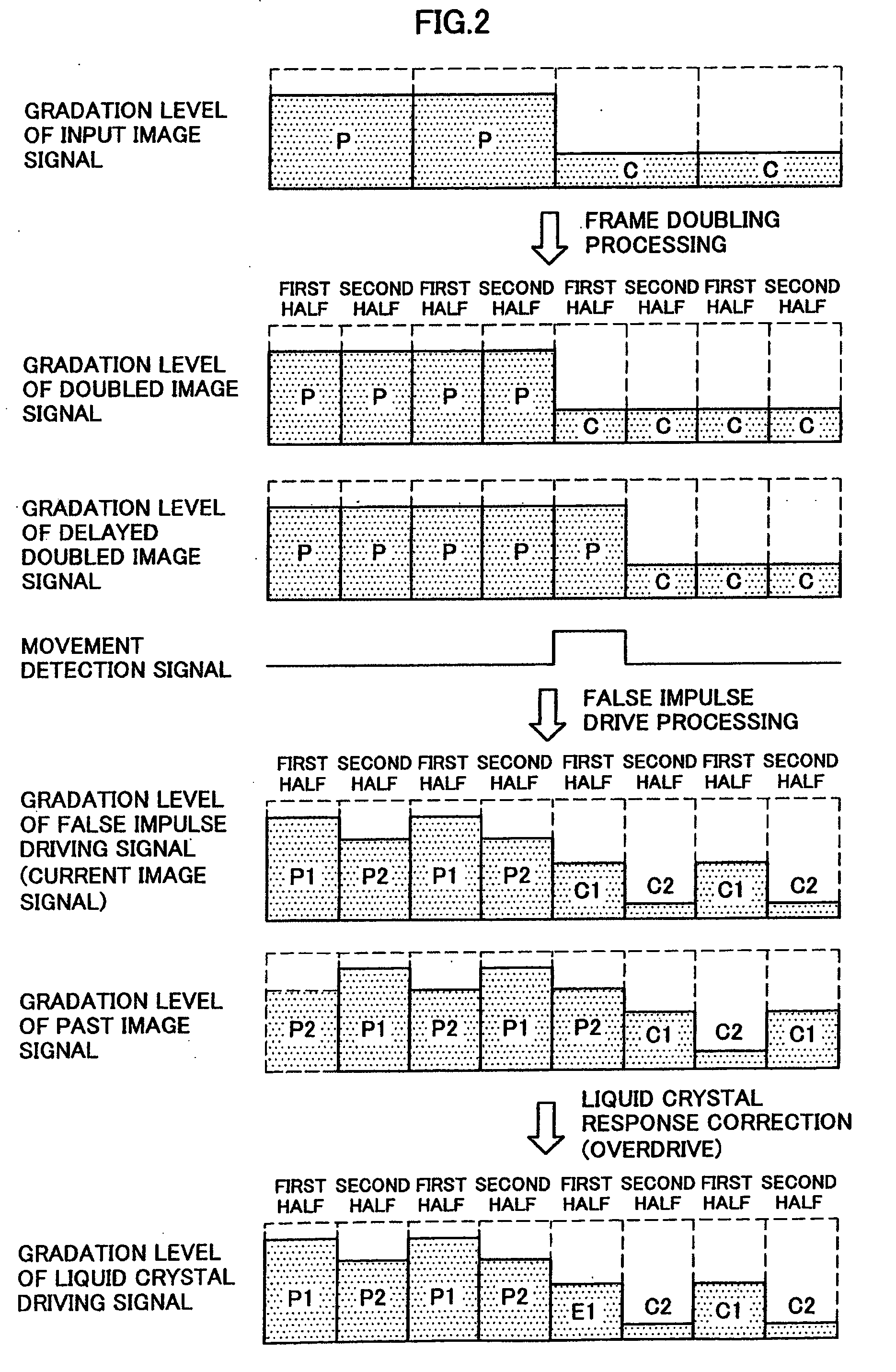Image processing apparatus, image processing method, and computer program
- Summary
- Abstract
- Description
- Claims
- Application Information
AI Technical Summary
Benefits of technology
Problems solved by technology
Method used
Image
Examples
first embodiment
[0053]First, an image processing apparatus according to the first embodiment of the present invention will be described. FIG. 1 is an explanatory view illustrating the image processing apparatus 100 according to the first embodiment of the present invention. The image processing apparatus 100 according to the first embodiment of the present invention will be described below using FIG. 1.
[0054]The image processing apparatus 100 shown in FIG. 1 performs processing of images being input to a display device in a hold-type display device such as a liquid crystal display device. As shown in FIG. 1, the image processing apparatus 100 according to the first embodiment of the present invention has a frame doubling processing part 110, a false impulse drive processing part 120, an overdrive interpolation processing part 130, a liquid crystal response correction table 140, a first frame memory 150, a second frame memory 160, a movement detector 170, and a selector 180.
[0055]Like the above fram...
second embodiment
[0076]In the first embodiment of the present invention, two frame memories are used to delay a signal for execution of movement detection and gradation level corrections. In the second embodiment of the present invention, an image processing apparatus and an image processing method that use only one frame memory for execution of movement detection and gradation level corrections will be described.
[0077]FIG. 3 is an explanatory view illustrating the image processing apparatus 200 according to the second embodiment of the present invention. The image processing apparatus 200 according to the second embodiment of the present invention will be described below using FIG. 3.
[0078]The image processing apparatus 200 shown in FIG. 3 performs processing of images being input to a display device in a hold-type display device such as a liquid crystal display device. As shown in FIG. 3, the image processing apparatus 200 according to the second embodiment of the present invention has a frame dou...
third embodiment
[0089]In the first and second embodiments of the present invention, image processing apparatuses and image processing methods capable of simultaneously improving dynamic image blurring caused by the hold effect and that caused by slowness of the response speed without causing deterioration of linearity of the gradation of a still image by inputting a movement detection signal based on a comparison result of a previous image signal and a current image signal to a selector to use one of a signal corrected by an overdrive interpolation processing part and a false impulse driving signal (current image signal) generated by a false impulse drive processing part as a liquid crystal driving signal have been described.
[0090]In the third embodiment of the present invention, an image processing apparatus and an image processing method capable of simultaneously improving dynamic image blurring caused by the hold effect and that caused by slowness of the response speed without causing deteriorat...
PUM
 Login to View More
Login to View More Abstract
Description
Claims
Application Information
 Login to View More
Login to View More - R&D
- Intellectual Property
- Life Sciences
- Materials
- Tech Scout
- Unparalleled Data Quality
- Higher Quality Content
- 60% Fewer Hallucinations
Browse by: Latest US Patents, China's latest patents, Technical Efficacy Thesaurus, Application Domain, Technology Topic, Popular Technical Reports.
© 2025 PatSnap. All rights reserved.Legal|Privacy policy|Modern Slavery Act Transparency Statement|Sitemap|About US| Contact US: help@patsnap.com



